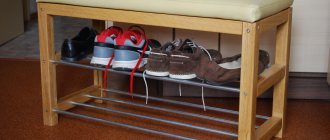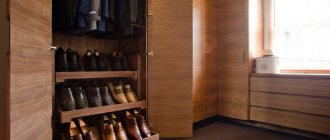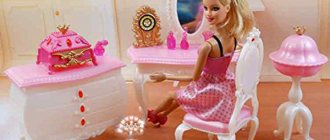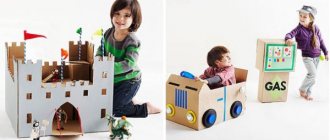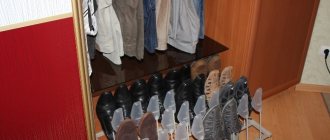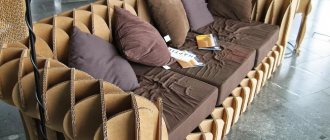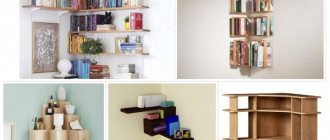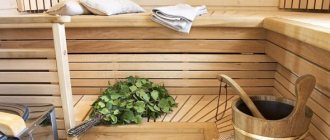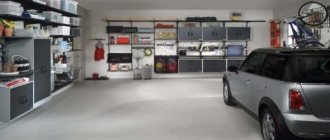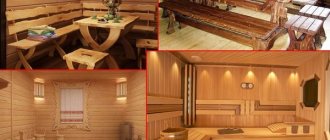Cardboard furniture is a great alternative if you can’t afford regular furniture! Tables, chairs and sofas can be made from cardboard with your own hands!
Such an ordinary thing as cardboard, which we often throw away without thinking with the rest of the garbage, can turn out to be an excellent material for building good furniture. Of course, you can assume that such interior items will be fragile and will easily bend under the weight of objects placed on it, but this can and should be avoided by properly processing the cardboard.
Advantages of cardboard furniture
Such furniture has a lot of positive advantages:
- Stylish design. You can design any thing for your home, based only on your taste or the preferences of your family;
- Economy. Spend very little money to buy the necessary tools, and you won’t have to spend money on delivery/installation;
- Mobility. With lightweight, immediately foldable furniture, moving will not be your nightmare - you will only have the joy of packing things for your new life;
- Ergonomics. There is no need to walk around an endless store in search of “that very thing” that will simultaneously appeal to you, fit into the interior and be comfortable - from now on you can combine these three qualities;
- Safety. There are absolutely no harmful or dangerous elements in cardboard furniture - after all, you make furniture from boxes with your own hands, which means you check and see all the components;
- Environmental friendliness. The furniture has lost its former appearance and attractiveness, or you decide to change the design - just take it apart and put it in a bag. You can throw it away without worrying, or you can use it to light a fire for barbecue - cardboard will not harm the environment in any way!
- Strength. If cardboard is processed correctly, furniture made from it will last a very long time.
Despite the large number of advantages, cardboard furniture has one extremely unpleasant feature - when it is in a humid environment, the furniture deteriorates and becomes unsuitable for use.
Take this fact into account and always remove cardboard furniture from the street, otherwise sudden rain may render it unusable.
Stationery storage organizer
Such a useful craft from a box can be made for a kindergarten, especially since material of any size is suitable for such a product.
Several boxes will be collected into one large organizer; it is better to make the back wall higher than the front. This method will allow children to conveniently take and return all the necessary items to their place.
A multi-level organizer can be easily made from cardboard bags of juice or dairy products. First of all, you should decide on the number and size of sections, then thoroughly rinse and dry the boxes.
Tools and materials for manufacturing
What is needed to make cardboard furniture with your own hands? The constant materials will be:
- Packaging cardboard/cardboard boxes – you can ask for boxes in the store or look for purchased equipment at home;
- Regular and colored tape, paper tape, double-sided tape;
- A stationery knife for cutting cardboard (watch the sharpness of the blades and change them as they become dull);
- Sharp scissors;
- Dull knife;
- Roulette/iron ruler;
- Pencil and eraser;
- Glue (PVA, hot melt glue, wallpaper glue, liquid “moment” - depending on the situation, but sometimes you can only get by with tape);
- Sandpaper (you will use it to sand the cardboard sections);
- Kraft paper (white and dark) and tracing paper.
Types of cardboard
To make cardboard furniture with your own hands, you will need different cardboard, depending on the situation.
Cardboard can be one-, two-, or three-layer, depending on the number of layers, which, in turn, consist of small waves that can be seen on the cut of the cardboard. The more layers of cardboard with waves, the thicker the cardboard. Also, do not forget to determine the sides of the cardboard before starting work:
- smooth (sometimes with drawings) side - front,
- rough - purl.
To strengthen the edges of cardboard furniture, use dark-colored kraft paper, gluing all the seams with it, using wallpaper glue. Stick white paper (or tracing paper) on all furniture - it makes decorating the furniture easier.
Remember: craft paper and tracing paper must be torn by hand before gluing, not cut!
How to beautifully design and decorate storage boxes
How to make cardboard furniture more durable
Depending on the purpose of the item (whether it be a chest for children's toys or a TV stand), cardboard is strengthened in different ways. For a more reliable and durable fastening, you must remember the following:
- To strengthen the cardboard and protect it from moisture, use parquet varnish, applying it to finished and decorated parts of the furniture;
- Try to make furniture symmetrical - it is more stable than irregularly shaped furniture;
- If you make asymmetrical furniture, then add more supports to it for strength;
- The more cross sections your furniture has, the more stable it is;
- To give more strength to your structure, use a trick - make two layers of cardboard on all furniture elements. But, pay attention, the layers must be different: one layer must have horizontal waves, the other must have vertical ones;
- Light cardboard is less durable than dark cardboard;
- The thicker the cardboard, the stronger it is.
Rack
Have you accumulated unnecessary boxes and want to get a new shelving unit? A video tutorial will help you turn boxes into shelving. The process is labor-intensive and time-consuming, but the result is worth it. At the first stage, it is necessary, without making a mistake in the accuracy of the calculations, to draw a diagram (dimensions of shelves, side walls, drawers). All parts are carefully cut out with a stationery knife, assembled into one whole, and glued together with thermal and Moment glue. For strength, the cardboard is folded in four layers. The product is decorated with self-adhesive film with a wood pattern and is decorated with handles made of acrylic decorative stones. The finished product is suitable for books, toys, and storing small items.
How to use cardboard furniture
How to properly use hand-made cardboard furniture
In order for your cardboard new thing to serve faithfully for a long time, do not forget that:
- Cardboard furniture is afraid of moisture (varnish will not save you from rain);
- Use it for its intended purpose: if you have made a table for letters/keys/changes, do not place a bulky flower pot on it;
- Make sure that there is no open fire near cardboard furniture (be it a fireplace, a fire, or even a cigarette) - you may lose not only a piece of furniture if you allow a fire hazard.
How to make furniture from cardboard with your own hands if only a box comes to mind? What can you make from a shoe box? We are in a hurry to surprise you - you can make a lot of amazing things from cardboard that harmoniously fit into the interior, from the nursery to the hallway, and if you are completely overwhelmed by inspiration, then there are many ideas for the office and country house.
Below you will see how to make cardboard furniture with your own hands using patterns and diagrams. For the first time, choose something that is not too complicated to get comfortable with the manufacturing technique.
Important! When designing furniture, remember that 0.6 cm will take up furniture decoration, and always add these centimeters when measuring dimensions.
Birdhouses
It’s easy to build a shelter for birds from a large cardboard box. This craft will be an excellent decoration for a country garden or an area in a kindergarten.
It is better to use non-ordinary boxes that do not withstand adverse environmental factors well.
And special boxes made of laminated cardboard in which milk or juices are sold. You can also use a thick shoe box.
Master class No. 1: Cardboard shoe stand
We decided to simplify your task - we put the first master class that anyone can assemble. So, armed with all the necessary items, let's get started.
Step 1
- Take sheets of cardboard - approximately 21x24cm - and divide them into three equal strips; Using a dull knife, press the strips thoroughly so that they bend.
- Cover the long sides of the sheet with any colored tape.
- Then fold the sheets into triangular oblong shapes and secure with the same tape.
Step 2
You can make any number of triangles. To secure the shelves, take whole sheets of cardboard and glue the triangles to them with double-sided tape or PVA. You can put a sheet of cardboard on the very top and put high boots on it.
Papier mache
Many people are familiar with papier-mâché from labor lessons in elementary school.
Name of technology (French papier mâché)
translated as “chewed paper.” Any paper waste is suitable as a raw material - from old newspapers to cardboard egg cartons (which, by the way, are also made using papier-mâché technology).
Figures made from papier-mâché
There are two types of papier-mâché: layered and paper pulp. You can sculpt and make relief ornaments and elements from paper pulp by filling various forms with it. The plasticity and pliability of the material allows you to give the product any look.
It is possible to create an entire item using just paper pulp. If you plan to make furniture entirely from paper, do not forget about the frame: of course, crushed raw materials mixed with glue are durable material, but they are still not suitable for making the base of a chair. The second method (layer-by-layer gluing small pieces of paper onto the base) is usually used to create hollow forms.
Making a mask using papier-mâché technique
Products made from paper pulp are easy to process - sanded, drilled, cut. Items made from papier-mâché can be painted, subjected to artificial aging, decoupage and gilding. Multi-layer varnish coating will make paper furniture moisture-proof and resistant to mechanical stress.
Master class No. 2: Cardboard bookshelf
Step 1
Take long, not wide sheets of cardboard - some of the sheets will be used for vertical bases, so they should be a little longer; in general, the size of the sheets can be any size at your discretion. You can look for such sheets in hardware stores - sometimes they throw them away with just such cuts.
If you can’t find it, take solid (without bends!) sheets and measure for the cutting line so that on all sheets they coincide when threaded into each other.
Step 2
If you take thick cardboard sheets, then when you connect them together they will hold tightly and without additional means. Thin sheets can be secured together with hot glue; it will dry quickly, so you will have to act quickly when joining the sheets. After joining the sheets, you can already use the shelf.
Containers for a closet or dressing room
A full-fledged dressing room with all the necessary shelves and drawers has exorbitant prices. You can save a lot of money by using boxes of different sizes to store shirts, underwear, accessories, shoes and other items.
Master class No. 3: Hanging shoe rack
- Take a couple of large sheets of cardboard and mark them into equal rectangles based on the size of your shoes. Then cut them out.
- Fold each rectangle as shown in the photo, and secure the resulting pockets with tape.
- Insert the pockets into each other so that it is easy to secure them with double-sided tape, but still leaves room for shoes.
- You can fix the shelf on the door - it will not interfere with you at all and take up a lot of space.
Chest of drawers for needlewomen
After watching the video, you can learn about a simple way to make a small chest of drawers from four unnecessary boxes installed in one row. To connect them together, you need wide double-sided and regular tape; to strengthen the structure, pasting is done with a second layer of cardboard. Handles made from small square boxes of the same size are attached to the drawers. The product is decorated with gray tape to match the color of the working material, colored stripes are made with red insulating tape. The author recommends using a chest of drawers for storing needlework and knitting supplies.
Master class No. 4: DIY laptop stand
Almost each of us has an indispensable tool for work and communication - a laptop. And we have to buy all sorts of peripheral devices for it (mouse, flash drives, removable hard drives, etc.). And so, when there is a desire to put it on a stand for ease of use, we are forced to go to the store and spend extra money. For those who want to avoid unnecessary expenses, but do not want to give up the stand, there is an excellent solution - to make it yourself. And how to do this - you will read in this article.
Materials and tools:
- Laptop to measure stand size;
- yardstick;
- several sheets of paper or newspaper for a stencil;
- thick cardboard for the stand itself (you can use an unnecessary box);
- long ruler;
- marker or pencil;
- large scissors or a utility knife.
You already understand that we don’t need any special materials - everything listed is probably available in any home. Let's start production.
Step 1.
Take paper or newspaper and spread it on a flat surface. It is better to carry out all actions related to measuring the size of the stand and making a stencil according to the “measure seven times, cut once” principle, because at best the stand will be crooked, and at worst it will not hold the laptop.
- First we will make a leg (this is a crossbar between the legs to give the stand more rigidity). We take a tape measure and measure the length of the laptop along the keyboard, from corner to corner.
- Mark exactly half of this length with a marker on paper.
- We draw a line - this will be half of the base of the pole. It's better not to draw this detail entirely. Make a slight inaccuracy and the laptop will stand crooked.
- We measure up from the edges of the segment 4 cm and 7 cm. Draw a rectangle.
- Mentally divide the rectangle into 3 parts: the first third is an almost straight line at a height of 4 cm, the second third is with a pattern or hand making a bend at an angle of 45 degrees to the 7 cm line, the last third is from the right end of the segment we draw a line to the 7 cm line at an angle 45 degrees.
- All this is simply and clearly shown in the photo (detail 1). At the point where the two curved lines meet, a narrow sleeve is made - at this place there will be a cutout for aligning the parts.
Step 2.
The same photo shows a template for the legs of the stand (detail 2).
You select the angle of the stand based on your personal preferences. This will add up to the height of the right and left sides of the leg. When drawing the template for the leg, pay attention to the tooth that will subsequently keep the laptop from falling.
In height, it should be at least a third of the thickness of the laptop. The slot in the leg for coupling with the leg should not be in the middle, but at a distance of approximately 1/3 from the far edge. This also affects the stability of the structure. Curves are at your discretion.
The slots in the legs and leg can be no more than 3-4 cm in height. They can be 3-5 mm in width depending on the thickness of the cardboard, but in both parts they can be the same.
Step 3.
Cut out paper templates. We attach the template of 1 part with the bottom cut to the even edge of the box chosen as the future stand. It is desirable that the stable parts of the stand are perfectly level (the stand will not wobble on the table).
- Carefully trace the template on one side, then flip it over to the other side and continue tracing. We get one continuous symmetrical part (leg). Apply parts only to smooth parts of the box (pieces of cardboard) where there are no folds.
- On another cardboard (for example, the bottom of a box) we place the paper template of part 2, i.e. leg. We circle and repeat the same a second time. The legs must be absolutely identical.
Step 4.
We cut out all the details with scissors or a stationery knife. We move them along the slots, as shown in the photo.
If everything is combined correctly, then you can be glad that a simple (like all ingenious), functional, strong stand for your digital friend is ready! Install a laptop on it and attach additional keyboards to it, watch movies at a comfortable height, sweep cookie crumbs under the stand - you are now the happy owner of a homemade laptop stand!
Types of shoe racks
Shoe racks are usually divided into several types.
A shoe cabinet with a seat is becoming increasingly popular. It may be sold separately or as part of a headset. A distinctive feature of this model is a comfortable soft seat located on top or on the side, which allows you to avoid the use of additional benches and banquettes in the hallway. Such a cabinet will certainly become a bright detail in your corridor.
A shoe rack with a hanger would be an excellent option for a small hallway. You can store not only shoes in it, but also jackets, raincoats, and coats. This model looks especially stylish in white.
Another solution for a small hallway is a narrow cabinet. It’s unlikely to fit all the shoes, but seasonal shoes certainly will.
A wall-mounted shoe rack with folding shelves will look interesting. Usually it is small in size (width does not exceed 25 cm). This model is attached to the wall, which makes it stationary.
We recommend looking at a detailed review of shoe cabinets for the hallway on our partners’ website: https://mblx.ru/tumbochka/218-tumba-dlya-obuvi-v-prihozhuyu.html many photos of modern cabinets, as well as recommendations from the pros!
An original option for the hallway is a cabinet with a mirror. It can be bought at any furniture store.
All the types described above are classified as closed cabinets. They hide shoes, which are not always beautiful, from prying eyes. The disadvantage is the lack of ventilation, which leads to an unpleasant odor. Drying products equipped with an ultraviolet lamp do not have this disadvantage. Shoes in them are disinfected as they dry.
Open cabinets look like a rack with shelves. This design solution has its pros and cons.
The advantages include:
- constant airing of shoes;
- no need to wash shoes after every walk;
- You don't have to open the doors to get your shoes out.
Build process
All prepared parts are glued together using a glue gun or Moment glue. If assembly is carried out using grooves, they are also glued for strength. It is recommended to repair all unevenness on the surface of thick cardboard using putty - it will not leave marks, and the excess will be hidden under the finish.
Parts that require gluing in layers must be placed under a press. Books or other heavy objects are good for this. After gluing, they are left for several hours, or better yet, for the whole day, until completely dry. All resulting ribs must be masked using craft paper.
- Decoupage - pasting with napkins;
- Painting with acrylic composition;
- Wallpapering;
- Using self-adhesive film;
- Decorating with mixtures.
Finished furniture can be used for its intended purpose within a day after production. Anyone can make furniture from cardboard with their own hands; how to find patterns and diagrams will be discussed below.
Apply glue to the coating
Finishing the shelf
The ends and inner surfaces of the shelf should be covered with small pieces of white paper. The size of the sheets is approximately 5x5 cm, no more is needed. The fact is that the surface of the shelf should be as flat as possible, and large pieces of paper must have folds at the corners.
Step 2. After the glue has completely dried, remove any smudges or ripples with fine sandpaper.
Step 3. Clean the surfaces from dust and cover them with three layers of white acrylic paint. Allow time to dry and finish with clear varnish. Choose the number of layers yourself, but experienced craftsmen recommend doing at least three. Make sure that all surfaces of the shelf are even, smooth and shiny.
Step 4. Decorate the product with braid and lace. Glue the material with hot glue; it is advisable to remove the burrs immediately, do not allow them to stick to clean surfaces.
To improve the appearance, you can additionally use colored rhinestones. In a word, show your creativity, decorate the shelf in a way that you personally like.
Forming parts
It is worth noting that when cutting out parts there should be no visible bends. If the work is done on a box of household appliances, it is better to cut on smooth edges. From six-layer cardboard you can make your own furniture of increased strength, for example, a shelf for shoes or books.
The details of the product are formed using a sharp stationery knife. Craftsmen advise using a construction knife if you plan to work with multi-layered raw materials. As the knife becomes dull, its blade is replaced. A dull knife will not be able to cut the required part smoothly and along the contour - you will have to redo the pattern.
Depending on the type of furniture assembly, parts may be:
- Plug-in;
- Glued;
- Stackable.
The latter option involves gradually increasing the cardboard to achieve optimal thickness. This move will further strengthen the model, preventing it from sagging under loads. It is beneficial to use cardboard sleeves in the design - special tubes with a high density.
Plug-in
Strengthening the structure
Many novice craftsmen are interested in how to make cardboard furniture durable. To do this, you should follow simple rules:
- protect the finished product from moisture and increase its strength by applying parquet varnish to the surface;
- maintain symmetry, since asymmetrical furniture is less stable;
- take dark cardboard - it is stronger than light cardboard;
- increase the number of transverse inserts, as well as the layering of the part by adding sheets;
- cover the edges with craft paper;
- if necessary, use stiffeners to strengthen the structure.
Kraft paper is a type of wrapping material that is made from wood and is highly durable.
Parquet varnish will protect the surface of the product from moisture and increase its strength.
Strengthening structures
Each part must be processed after cutting with a knife. This happens in the following way:
- Cleaning up. The cut edges of the module must be sanded. This technique will give them smoothness and prepare them for further processing;
- Pasting. Kraft paper is used for this. It must be torn by hand, and then carefully glued over the edges using PVA glue. You can apply paper to the entire surface, which creates additional reinforcement.
Furniture assembled using grooves will be durable and reliable. In the photo below you can see the principle of making such furniture: during the cutting process, oblong holes are additionally outlined, which are subsequently cut out. An additional structure is inserted into the grooves, which fastens the frame on both sides. Thanks to this, the furniture becomes stronger.
Stiffening ribs are often used, which additionally secure the base of the furniture. Using them, you can independently strengthen a cardboard tabletop, a shoe shelf, or a bookcase. The stiffening ribs and grooves must be coated with glue. By strengthening the structure, you won’t have to worry about the durability of the furniture in the future.
Sand the surface
Table
The main disadvantage of purchased toy furniture is the price. However, no one guarantees that the doll table and bed will not break from too much pressure or an accidental fall. For daily children's games, it is better to make your own furnishings using the most “waste” material - paper. If such furniture is torn, it will not be difficult to replace it with new one. And to extend the service life of a paper product, it is better to take durable craft packaging for it. In addition, it has a shade of natural wood, looks stylish and holds folds well.
The best place to start furnishing is the table. You can come up with a lot of different scenes with it. The table should be proportional to the doll for which it is being made, but items that are too large become flimsy and quickly deform. The optimal square for a toy is 15 x 15 cm.
The simplest diagram of a paper table:
Step-by-step instruction:
- Fold the square sheet in half. Let's reveal.
- We bend the sides to the central axis outlined in step 1.
- Fold the top and bottom edges towards the middle. Let's straighten it out.
- We open the lower part, folding it along the diagonals indicated by the dotted line.
- Press the trapezoidal valve.
- Repeat steps 4 and 5 for the top half of the figure.
- We straighten the triangular “pocket” from the inside and flatten it, giving it a square shape. Repeat the same action for the remaining three sides.
- We fold the lower right square along the dotted lines indicated in the diagram. Open from the center outwards, forming the basic “Bird” shape.
- We do the same with the remaining three squares.
- Turn the product over to the front side.
All that remains is to form the table legs. There are two ways to do this: lower the bottom half of the Bird and fold it 90° or bend the corners. The diagram shows the first option.
